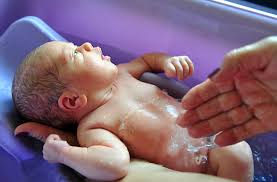Recent Comments
No comments to show.
We all use car seats because they are protective in a car accident. A child restraint is designed to spread the forces of a collision over a child’s body so as to reduce the tissue damage that would result if it were applied to only a small area (such as when a child’s head hits a windscreen). Carseats and capsules are made with energy absorbing material and in comparison to the hard interior of the car or objects outside the car, mean that the deceleration is slower and the resultant forces being exchanged are reduced.
The four main functions of a seatbelt or child restraint are to:
Videos of how child car seats are tested by CREP (the Child Restraint Evaluation Program) can be reviewed here:
https://www.childcarseats.com.au/testing-explained
In order for a restraint to perform these functions optimally, it is important that children are in the correct restraint for their age and size, that they are using the restraint properly and that the restraint has been correctly installed in the vehicle to the manufacturer’s instructions. Furthermore, there should be no objects that interfere with the correct performance of a restraint during a crash (additional aftermarket accessories for example) or that can collide with the child or another occupant in the vehicle (loose items in the boot or seat that can become projectiles and injury an occupant).
If you have any questions please don’t hesitate to contact our Restraint Fitting Team on 1300 859 775 or via email at jess@rockabyebabyhire.com.au.
Posted by admin in Babies 0-6 months, Babies 6 months - 4 years, General, How to, Safety on November 13th, 2020
Before commencing any installation its vital that you read the manufacturer’s instruction manual in full. If you don’t have a copy most seat manufacturer’s websites have a section with downloadable manuals available for car seat users.
When you have read your manual head over to the car. The first thing to do is locate the ISOFIX mounting points which are usually at the bottom of the seat where the seat back meets the seat base. If the car has ISOFIX mounting points, the location may be identified by a symbol on the carseat like these:
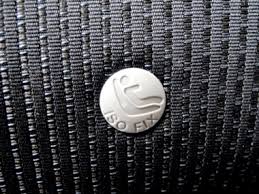
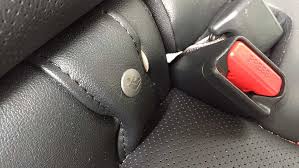
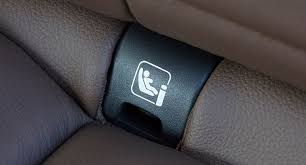
Sometimes the ISOFIX anchorage bars may be visible like this:
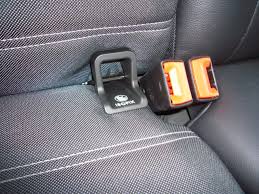
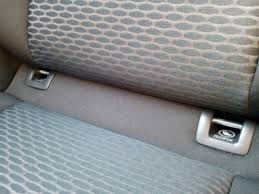
If your child restraint has rigid connectors fitted, engage each connector to the corresponding ISOFIX bar on the vehicle:
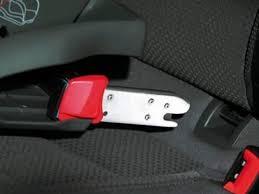
Push the child restraint towards the backrest applying a firm and even pressure on both sides. Care should be taken to ensure both sides have been engaged. This can be confirmed when the ISOFIX indicator turns from red to green.
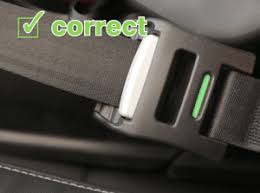
If your restraint comes with flexible ISOFIX connectors (built on seatbelt material), engage the connectors into each ISOFIX low
anchorage. A click may be felt and a green indicator will show on the top of the flexible connector when it has engaged.
Pull each strap to ensure both lower anchorage connectors are engaged and all slack is removed from either side.
All ISOFIX compatible child restraints also require the use of the top tether strap which must be attached
to the vehicle’s child restraint anchorage point, and be adjusted to remove slack. Please note the top tether strap is engaged to minimise any forward momentum in a rear end accident. It needs to be adjusted firmly but not overtensioned otherwise your restraint will lift off the car seat and feel loose when touching.
No ISOFIX? No problem
Please note if your car does not have ISOFIX available, all Australian ISOFIX compatible child restraints are also able to be installed using the car seatbelt and top tether strap, just as in non-ISOFIX compatible restraints. The rigid connectors on the child restraint can be retracted if you are installing using the car seatbelt.
Can I use a restraint purchased or manufactured overseas?
Child restraints purchased from overseas, including ISOFIX compatible child restraints, are illegal to use in
Australia as they do not comply with AS/NZS 1754. Unlike the European standard, the Australian/New Zealand Standard requires all restraints to:
AS/NZS 1754:2013 specifies child restraints Types A1/A2/A4, Type B, Type D, Type A1/B, Type A2/B, and Type A4/B are allowed to be fitted with ISOFIX attachment.
Booster seats and Type G combinations cannot use ISOFIX anchorages as there has been some concern
internationally about their likelihood for the occupant to submarine and Type G restraints are not allowed as the low anchorage may not be strong enough to withstand the crash load.
Posted by admin in Babies 0-6 months, Babies 6 months - 4 years, General, How to, Safety, Travelling with kids on November 13th, 2020
Child restraints are designed to be installed in most passenger vehicles, without requiring any additional after market fitting accessories.
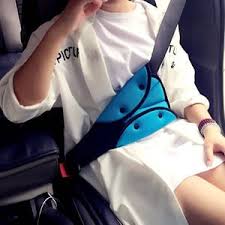
Incorrect use and placement of additional comfort or fitting accessories by parents and carers can reduce the safety of the installation and should only be used if recommended by a qualified restraint fitter.
Accessories for child restraints, other than those supplied upon purchase by the manufacturer and crash tested with the restraint under either AS/NZS 1754 or AS/NZS 8005 are not recommended.
The following reasons apply to some specific accessory items that are sometimes used in conjunction with children in child restraints. None of these accessory items are recommended for a variety of reasons.
Several common designs of seatbelt positioners link the sash and lap sections of a seatbelt, raising the lap belt up into the abdomen which increases the risk of submarining and abdominal injuries. If children cannot fit well in an
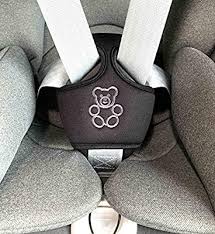
adult seatbelt, they should use a booster seat with a lap-sash seatbelt.
Buckle covers and other devices to stop a child from unbuckling a restraint can impede the rapid removal of the child in the event of an emergency (e.g. after a crash). Behavioural solutions are preferred wherever possible. If you do need to utilise a buckle cover aim to buy the model simplest to remove.
Adding additional padding, pillows and cushions that surround the head or neck that are not provided by the manufacturer and tested with the restraint, may result in the inbuilt harness or seatbelt being slack and/or encourage incorrect seated posture and therefore not optimal belt positioning. Pillows behind the head might increase the risk of head injuries in side impacts by pushing the head forward and beyond the side wings of a restraint.
After market belt tensioners are generally not required for standard installations. Where they are required the restraint manufacturer will provide an appropriate accessory and include instructions on how to use the tensioner in the manual. If used with booster seats or seatbelts, they can lead to injury if over tightened and they may make the seatbelt buckle more difficult to unbuckle in the event of an emergency. When used incorrectly to install a child restraint, they may deform the restraint, reducing the restraint’s strength.
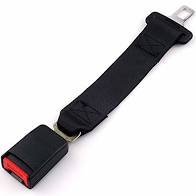
A seatbelt extender is an extra piece which goes between the male and female ends of the seatbelt and makes the belt longer and more accessible. Originally designed to be used by obese adults to allow them to buckle up where the belt would have otherwise been too short to meet and buckle up. However they are now advertised as a solution to a variety of “problems” such as making it easier to buckle a child into a booster or carseat.
Seatbelt extenders should not be used if the buckle is located in contact with the child’s body. They can introduce slack into the belt which could increase the chance of the buckle being located in front of a child’s abdomen and causing injury. They can also interfere with the correct belt path if used with a booster seat. They also require the parents or carer to check that both the extender buckle and main belt buckle are connected each time, with the possibility that one buckle can be inadvertently unsecured without the knowledge of the carer.
Rigid toys and other types of entertainment accessories may pose a risk of injury if they come in contact with the child in a
crash. Also, if not secured, rigid toys may become projectiles in a crash and injure any of the vehicle occupants. Only soft toys that contain no rigid parts should be used unsecured in a vehicle.
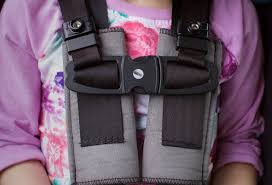
Designed to prevent the child from removing their arms from the inbuilt harness, pose a strangulation hazard and could injure the child’s throat or chest in a crash or the chest. Behavioural solutions to a child slipping their arms out of a harness should be employed wherever possible.
Sun shades or insect nets, which cover both the child and restraint, may prevent a parent or carer from seeing a child misusing their child restraint or in distress. Such covers may reduce air circulation and result in the overheating of children.
If you have any questions or require any assistance with your restraints feel free to reach out, our staff are always happy to help.
You’ve probably seen the shoulder height marker labels that are sewn into all new child restraints in Australia – but do you know what they are for, or how to use them?

When the Australian Standard for child restraints was revised in 2010, it made significant changes to the way the suitability of a restraint was measured for a child. Previously, suitability had been determined by the weight of the child, but the 2010 standard removed all mention of weight, opting instead to add shoulder height marker labels that are sewn into the covers of all child restraints.
These new shoulder height marker labels give parents and carergivers an easy to understand, visual reference for fitment and suitability for their child, taking away the guesswork and the potential to lose track of your child’s growth in any given child restraint.
When researching restraints, it can be extremely helpful if you know your child’s seated shoulder height, so we thought we’d write a guide describing how to measure that correctly.
Your child should be in their regular clothing (if they normally wear a nappy when travelling, have them wear one now, for example).
As children’s shoulders slope downward from their necks, we recommend you measure to the middle point between their neck and the outside of their shoulder (where the shoulder strap of the child restraint harness would naturally sit).
If your child is still to young to sit up unassisted:
Understanding what the shoulder height labels mean is the key to ensuring your child is in the correct car seat for their age and height. The correct restraint is the safest option. Ignore what you think is the correct information about age, weight, abilities etc. Just follow the instructions on the shoulder height markers.
If you have any questions or comments, please get in touch.
Posted by admin in Babies 0-6 months, General, How to, Safety on May 26th, 2020
It is important to ensure you are monitoring the ongoing use of your baby capsule or carseat. As your child grows in weight and height it is important to check your baby’s shoulder height in relation to the harness straps of their restraint and, where necessary, make the necessary adjustment to the height of the harness to keep your baby safe. It is really important to ensure that the harness straps are always at or above the shoulder in rearward facing mode as there is potential for significant crash loading to be put on the child’s spine as they ramp ‘up’ the seat in the initial crash phase.
Capsules and carseats have multiple shoulder strap slots so you can move the harness up as your baby grows.
In rearward facing restraints, you should use the slot that is level or slightly above your child’s shoulders. Do not use a slot if it is below your child’s shoulders.
In forward facing restraints, you should use the closest slot to your child’s shoulders, but not more than 25mm below your child’s shoulders.
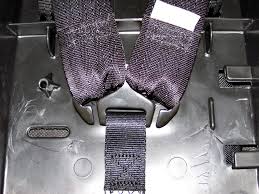
It is really important to ensure that the harness straps are always at or above the shoulder in rearward facing mode as there is potential for significant crash loading and to be put on the child’s spine as they ramp ‘up’ the seat in the initial crash phase resulting in serious spinal and other injuries.
To adjust the height of your harness, you will need to loosen the harness as much as possible and lay your restraint face down, so that the spreader / G plate becomes visible on the back of the seat. Simply unhook the ends of the harnesses from the spreader / G plate, and re-thread the straps through the appropriate slot for your child’s shoulder height. When you are finished, ensure that you’ve correctly re-attached the straps to the spreader / G plates.
A link to our instructional video demonstrating how to adjust your capsule harness is here and this makes it easy to do:
Some carseats and capsules have a feature that is built into the restraint which adjusts both the headrest and the harness simultaneously. With this feature, there is no need for rethreading or undoing the harness from the spreader / G plate at the back of the seat.
Still need some help with your carseat or capsule harness? Just give us a call on 1300 859 775 option 2 to speak to one of our accredited restraint fitters.
Posted by admin in Babies 6 months - 4 years, General, How to, Safety, Travelling with kids on October 13th, 2017
Our goal has always been to provide our customers with the most up to date information, products and resources to empower you to make informed decisions for your families.
You may be getting ready to return your hired capsule or carseat and that means you will be doing some carseat shopping. Our guide has been put together by our Accredited Restraint Fitting Team to help you navigate the choices, options and products that are on offer and help you to choose the right seat for your child, your needs and your budget.
When we arrive at a baby shop, instinctively we will gravitate to either a label or logo we recognise, or a colour we like. However choosing the correct product for your child is much more complex than that. We have set out our top tips as well as information on available products below for you. Of course this list is not exhaustive but we have done our best to be as comprehensive as possible. As always, if you need our help we are just a phone call away.
Ensure that the seat you are considering is the right size for your child and that it meets Australian Standards and has the Australian Standards logo sticker present.
Contrary to popular belief, Australian Standards for car seats are in fact among the toughest in the world ensuring the best possible protection for our children on the road.
In Australia it is illegal to purchase or use a car seat that does not comply with the Australian/New Zealand Standard 1754 – even if you are visiting. Always look for the certification mark AS/NZS:1754 on the car seat you choose for your child.
Seats are not graded by age of children but by their size. The size of children can vary – two 4 year olds can be entirely different heights and weights so check that your childs fits within the shoulder height marker label for the specific model of car seat you are considering. Just like when you are buying jeans – you take your legs with you to ensure the product fits so take your child with you to test the restraint does in fact fit them.
Is it easy to use?
You’ll be using this seat a lot. Is it easy for you to use? When you go to the hire company or the baby shop ask them to put the restraint on your backseat in the position it will be fitted in. How easy is it for you to get your child in and out of this restraint?
Is it easy to adjust?
We also suggest you test the adjustment mechanisms on the inbuilt harness – do they loosen and tighten easily? And when its time to adjust the shoulder strap height up a new level can you do that from the front of the seat or do you have to completely uninstall it, adjust them then try and reinstall it each time?
Is it affordable?
Price is not a great indicator for quality – and that is a good thing. There is something available for most budgets on the market today. Do not feel like you are a bad parent or being cheap if you can not afford $700 for a carseat. The biggest price tag does not ensure you have the safest seat. Have a look at the CREP results. The Child Restraint Evaluation Program (CREP) is a consortium of government agencies and motorist organisations whose aim it is to provide independent and consistent information on the levels of child protection from injury in a crash provided by individual car seats and the ease with which they can be used correctly using a very simple star system with 1 out of 5 being the lowest score and 5 out of 5 the highest.
www.childcarseats.com.au
How long can you use this carseat for? Try and find a restraint with the highest shoulder height markers for ending use so you can use the seat for a long period of time. If you hope to keep your child rear facing then an extended rear facing seat with a tall shoulder height marker will be idea for you. Or maybe consider getting one of the new Type G restraints – these use the inbuilt harness up to an average 8 year old meaning you do not won’t ever have to buy a booster seat.
The road laws relating to kids and cars are minimums. We do not aim for the minimum safety – but for the maximum. So keep your child in their restraint for as long as they still fit in it. When your child reaches 6 months that does not mean its time to turn them forward facing. Just because they turn 3 you do not put them in size 3 shoes – if the seat still fits – keep using it.
Use their age as a guide only:
Newer seats nowadays all have a label on the restraint showing you exactly where the childs shoulders can be to safely use the seat. Shoulder height markers make it so easy for parents and carers to establish if a child car seat is suitable for their child and when the child needs to have the shoulder straps adjusted or when they are ready to move to the next child car seat.
Shoulder Height Markers, located on the inner side of the seat, prompt parents and carers to ensure their childs seats, and associated harnesses, are adjusted at the right stages of the childs growth to maintain optimal safety in the event of an accident.
Your child should remain in a rear facing seat or position until their shoulder is in-line or above the forward facing height marker.
Your child should remain in a forward facing seat until their shoulder height is above the upper shoulder height marker.
Note: There is a slight difference between rear and forward facing and that relates to the dynamics in the event of a collision.
We do not necessarily believe that you require professional installation of your restraint however there are a lot of belts, buckles and pathways to contend with. Before you begin, ensure you have read the instruction manual for your restraint in full and be confident that you understand how to install your seat. If you are uncertain please do not hesitate to contact us or a local restraint fitting station for advice.
Unfortunately there is a lack of understanding around the power of collision dynamics and there is an idea in the community that a car seat must be ‘rock solid’ post-fitment to be safe. This is incorrect. The Australian Standard testing procedures that these products are subjected to are stringent and demanding.
The more rigidly a restraint is attached to the vehicle chassis, the more collision force the infant will be subject to. Imagine if you will the catching arm of a cricket player. If it were completely rigid and unmoving it would shatter into pieces – exactly the same with carseats. Even the new rigid ISOFIX seats have a hinge that allow for some up and down movement to counter this possibility.
Overtensioning a restraint when installing it can cause stress damage to both the restraint and/or the vehicle seats unecessarily. A restraint that is fitted correctly does allow for some movement but no more than 2.5 cms from side to side at the belt path end of the restraint. Shaking your restraint around at the top end (where the top tether begins) is not an accurate test of correct fitment and will do nothing but loosen your restraint and perhaps leave the seat requiring refitment.
We have had customers return capsules or carseats and inform us that they didn’t use the top tether because it was annoying or took up too much time to deal with. Please – use the top tether. In an accident it serves as a very important tool to minimise the possibility of your child being injured in the crash.
When you are using the inbuilt harness ensure that the shoulder straps are:
Pinch test
Our retail arm has a selection of the latest, age appropriate current standard seats for sale including rear facing, forward facing, extended use seats and ISOFIX models. We can assist you to choose the right seat for your family. You can order and buy a seat from us and we will deliver it, pick up your hired restraint and install the new one all at the same time at no extra cost.
https://www.rockabyebabyhire.com.au/shop/category/carseats/
We hope that keeping our list of tips and information in mind will help you to make the right choice. If you have any concerns about child car seat use or how to choose please do not hesitate to contact our Team on 1300 859 775 who will be very happy to assist you.
Posted by admin in Babies 0-6 months, General, How to, Safety, Travelling with kids on June 9th, 2017
As your baby grows it is important to check and, where necessary, adjust the inbuilt harness in your hire baby seat.
Your capsule would have been provided to you on its lowest (newborn) setting with the shoulder harness on the very bottom option. Week by week, new babies put on weight and grow in length and this will mean that from time to time you will have to move the shoulder straps up a level to ensure your baby enjoys optimum safety in their hire capsule.
Harness straps that are too low for baby’s height or are twisted can be the cause of very serious injury in the event of an accident so ensuring that the shoulder harness straps are flat, firmly fitted and at the right level for your baby is vitally important.
We invite you to view our instructional video that shows how quick and simple it is to adjust the shoulder straps in your baby seat:
Posted by admin in Babies 0-6 months, Babies 6 months - 4 years, How to, Safety, Travelling with kids on May 24th, 2017
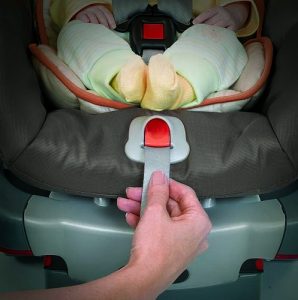
We don’t want to recite statistics at you today. Suffice to say that car crashes are real and possible and we want everyone including our little people to be safe on the road.
By choosing and using your carseat correctly you can minimise the risk of injury in the event of an accident significantly.
You’ll be using this seat a lot. Is it easy for you to use? When you go to the hire company or the baby shop ask them to put the restraint on your backseat in the position it will be fitted in. How easy is it for you to get a baby in and out of this restraint?
We also suggest you test the adjustment mechanisms on the inbuilt harness – do they loosen and tighten easily? And when its time to adjust the shoulder straps can you do that from the front of the seat or do you have to completely uninstall it, adjust them then try and reinstall it each time?
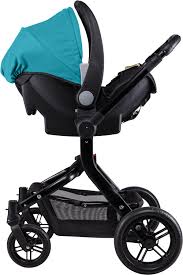
Price isn’t a great indicator for quality – and that’s a good thing. There’s something available for most budgets on the market today. Don’t feel like you’re a bad parent or being cheap if you can’t afford $700 for a carseat. The biggest price tag doesn’t ensure you have the safest seat. Have a look at the CREP results. The Child Restraint Evaluation Program (CREP) is a consortium of government agencies and motorist organisations whose aim it is to provide independent and consistent information on the levels of child protection from injury in a crash provided by individual car seats and the ease with which they can be used correctly using a very simple star system with 1 out of 5 being the lowest score and 5 out of 5 the highest. Of course if you don’t wish to buy your baby capsule we have a range of high quality, clean and safe baby capsules for hire.
This tip relates mainly to baby capsules but gee the travel system concept is a good one! Imagine you’ve been driving around for ages and finally, finally!! the baby is asleep. Well now it would be nice to grab a coffee or do some shopping right without having to disturb the baby. So if you have a travel system compatible capsule you can just pop your capsule straight onto your pram frame and you’re off. Lots of pram companies sell adaptors to match your capsule to your pram and of course we offer a range for hire.
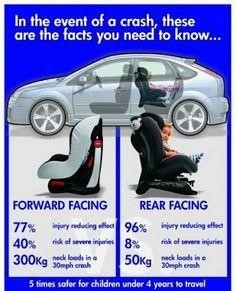
How long can you use this restraint for? For the early days we would recommend you consider hiring a baby capsule just for convenience, saving $ and ease of use. When you are ready to move out of your hired capsule into a carseat make sure you consider just how long this next restraint is going to be useful for. Try and find a restraint with the highest shoulder height markers for ending use so you can use the seat for a long period of time. If you hope to keep your child rear facing then an extended rear facing seat with a tall shoulder height marker will be idea for you. Or maybe consider getting one of the new Type G restraints – these use the inbuilt harness up to an average 8 year old meaning you don’t won’t ever have to buy a booster seat.
Using our tips we hope that you can get the biggest bang for your buck when it comes to buying your child car seat. Choosing the right restraint is an investment worth making.
Posted by admin in Babies 0-6 months, Babies 6 months - 4 years, Explore Sydney, How to, Safety, Travelling with kids on May 24th, 2017
There is lots of solid research both here in Australia and from overseas that shows that unfortunately, the rate of misuse of child car seats is very high.
“A 2010 study of 503 children from newborn to the age of 12 found half of all restraints had errors in how they were used. Some had up to seven errors each, ranging from failing to buckle the child in to slackness in the belts and sashes. Most often parents weren’t aware they had made a mistake.”
http://www.smh.com.au/national/health/errors-in-child-car-seat-use-putting-lives-at-risk-experts-warn-20170518-gw894a.html
When we arrive at a baby shop, instinctively we will gravitate to either a label or logo we recognise, or a colour we like. However choosing the correct product for your child is much more complex than that.
The following information is general and we strongly encourage you to read fully the instruction manual that relates to your particular make and model of child restraint.
Ensure that the seat you are considering is the right size for your child and that it meets Australian Standards and has the Australian Standards logo sticker present.
Contrary to popular belief, Australia’s Standards for car seats are in fact among the toughest in the world ensuring the best possible protection for our children on the road.
In Australia it is illegal to purchase or use a car seat that does not comply with the Australian/New Zealand Standard 1754 – even if you’re visiting. Always look for the certification mark AS/NZS:1754 on the car seat you choose for your child.
Seats are not graded by age of children but by their size. The size of children can vary – two 4 year olds can be entirely different heights and weights so check that your child’s fits within the shoulder height marker label for the specific model of car seat you are considering. Just like when you’re buying jeans – you take your legs with you to ensure the product fits so take your child with you to test the restraint does in fact fit them.
The road laws relating to kids and cars are minimums. We don’t aim for the minimum safety – but for the maximum. So keep your child in their restraint for as long as they still fit in it. When your child reaches 6 months that doesn’t mean its time to turn them forward facing. Just because they turn 3 you don’t put them in size 3 shoes – if the seat still fits – keep using it.
Use their age as a guide only.
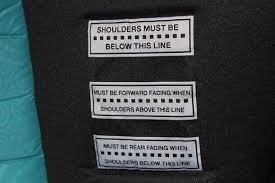
Newer seats nowadays all have a label on the restraint showing you exactly where the child’s shoulders can be to safely use the seat. Shoulder height markers make it so easy for carers to establish if a child car seat is suitable for their child and when the child needs to have the shoulder straps adjusted or when they are ready to move to the next child car seat.
Shoulder Height Markers, located on the inner side of the seat, prompt parents and carers to ensure their child’s seats, and associated harnesses, are adjusted at the right stages of the child’s growth to maintain optimal safety in the event of an accident.
Your child should remain in a rear facing seat or position until their shoulder is in-line or above the forward facing height marker.
Your child should remain in a forward facing seat until their shoulder height is above the upper shoulder height marker.
Note: There is a slight difference between rear and forward facing and that relates to the dynamics in the event of a collision.
We don’t necessarily believe that you require professional installation of your restraint however there are a lot of belts, buckles and pathways to contend with. Before you begin, ensure you have read the instruction manual for your restraint in full and be confident that you understand how to install your seat. If you are uncertain please don’t hesitate to contact us or a local restraint fitting station for advice.
Unfortunately there is a lack of understanding around the power of collision dynamics and there is an idea in the community that a car seat must be ‘rock solid’ post-fitment to be safe. This is incorrect. The Australian Standard testing procedures that these products are subjected to are stringent and demanding.
The more rigidly a restraint is attached to the vehicle chassis, themore collision force the infant will be subject to. Imagine if you will the catching arm of a cricket player. If it were completely rigid and unmoving it would shatter into pieces – exactly the same with carseats. Even the new rigid ISOFIX seats have a hinge that allow for some up and down movement to counter this possibility.
Overtensioning a restraint when installing it can cause stress damage to both the restraint and/or the vehicle seats unecessarily. A restraint that is fitted correctly does allow for some movement but no more than 2.5 cms from side to side at the belt path end of the restraint. Shaking your restraint around at the top end (where the top tether begins) is not an accurate test of correct fitment and will do nothing but loosen your restraint and perhaps leave the seat requiring refitment.
We have had customers return capsules or carseats and inform us that they didn’t use the top tether because it was annoying or took up too much time to deal with. Please – use the top tether. In an accident it serves as a very important tool to minimise the possibility of your child being injured in the crash.
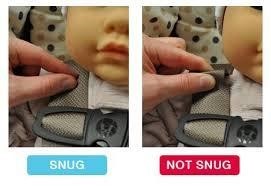
When you are using the inbuilt harness ensure that the shoulder straps are:
Keeping our list of tips in mind will help you to make a the right choice. If you have any concerns about child car seat use or how to choose please don’t hesitate to contact our Team who are well able to assist you.
Posted by admin in Babies 0-6 months, General, How to, Safety on May 8th, 2017
Bathing a newborn baby for the first time often brings out feelings of anxiety in new parents. As a former NICU/Special Care Nurse, I saw this all the time. The practice of post-natal midwives and nurses should be: show one, assist one then supervise one. Unfortunately, this doesn’t always happen for various reasons so I have a step-by-step guide as well as some dos and don’ts as a general reference. However, please make sure you follow any advice or instructions given to you by health care professionals over this information.
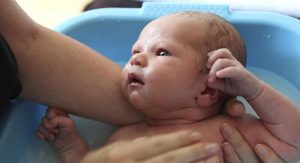
It is important to remember that babies needs and wants vary. Especially when it comes to things like sleep patterns, likes and dislikes. We often think babies hate baths but the fact is most of them find it relaxing and enjoyable. The part they don’t like is the undressing and then removal from the nice warm water. Once in that warm water the crying can often stop and the baby will look and feel contented. That’s why it is best to bath baby in the evening just before their evening feed then bedtime. It will take some time to work out your baby’s routines so use the evening as guide at first and choose a time when you will be less likely to have distractions.
Something I always advocate is minimal use of soaps and especially bubble bath. It might make you feel good to clean you baby with something sudsy as that is what we think cleans the best. The fact is, babies don’t need suds and their fragile skin can be made even drier because of them. You know what it’s like having dry, flaky skin and scratching, feeling uncomfortable. Imagine how uncomfortable that would feel if you were a tiny baby not capable of scratching! Also avoid scented creams and lotions. If your baby has dry skin then a little sorbolene or zinc and castor oil is very good and a lovely way to gently massage them at the same time. This is a great relaxation technique.
